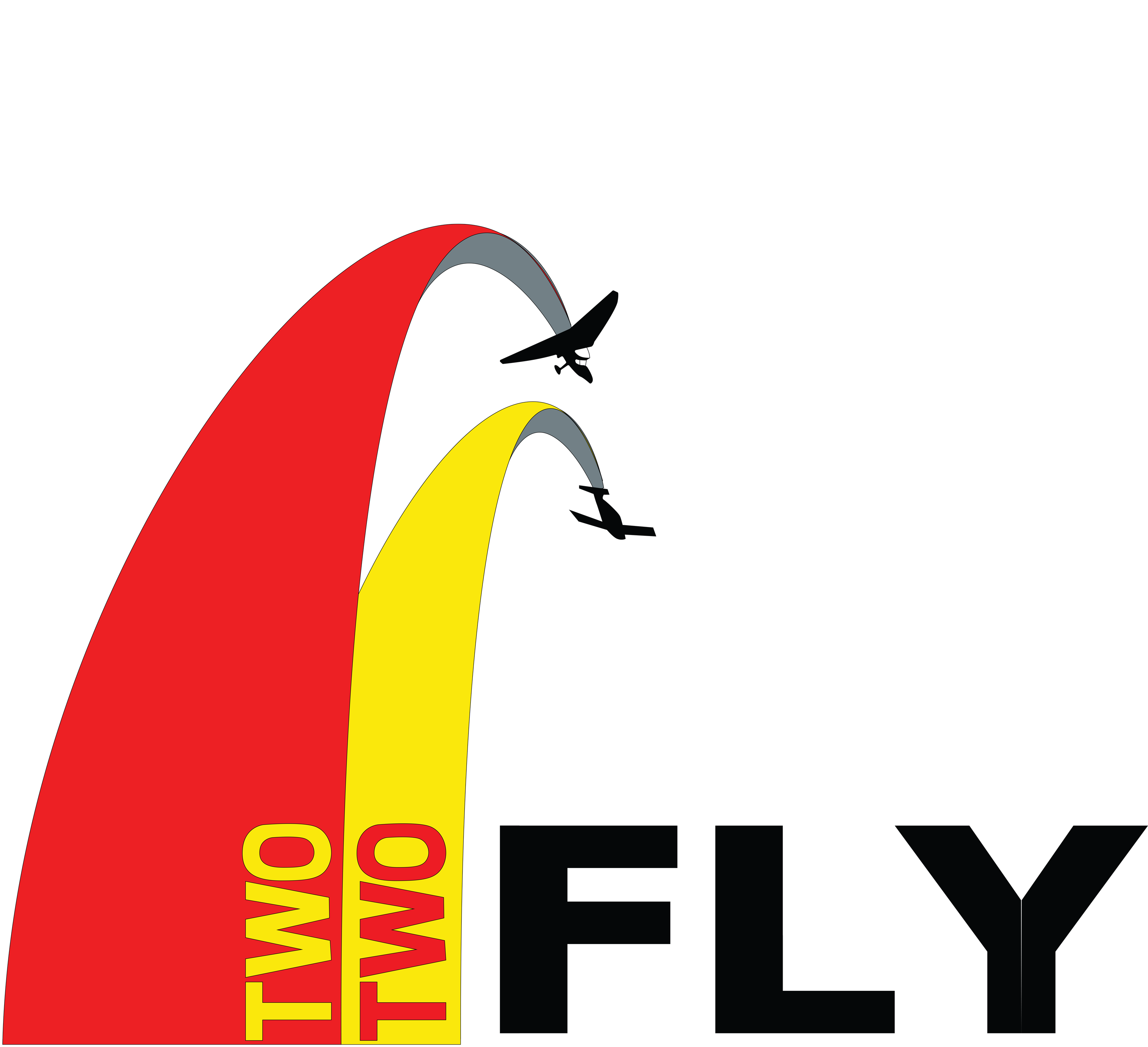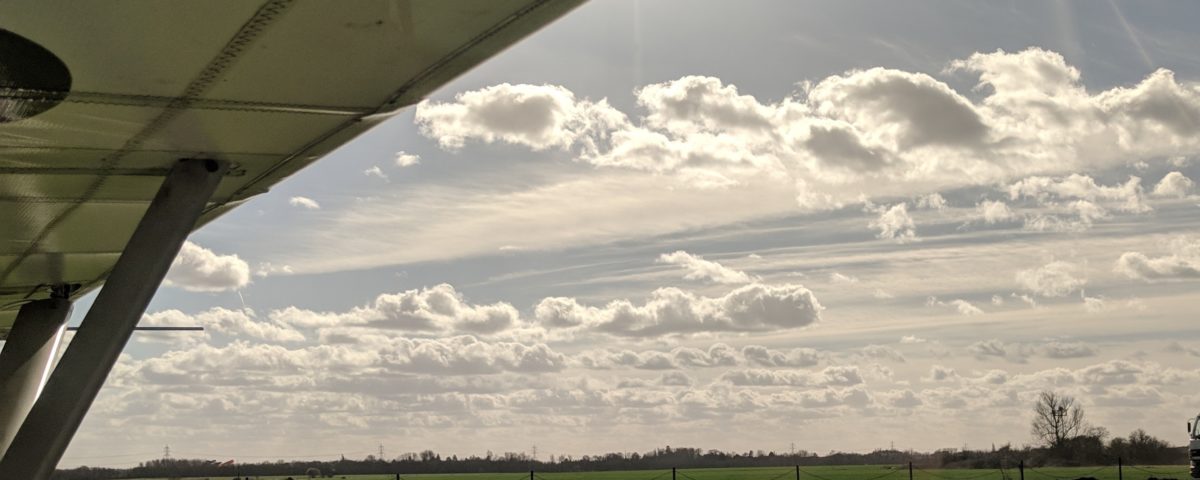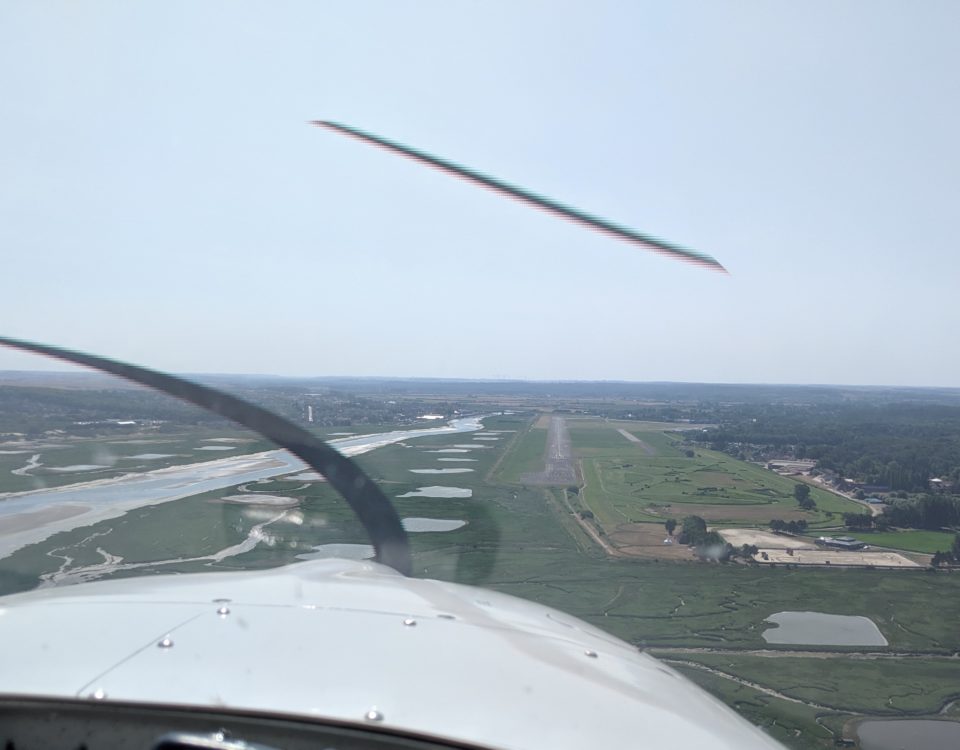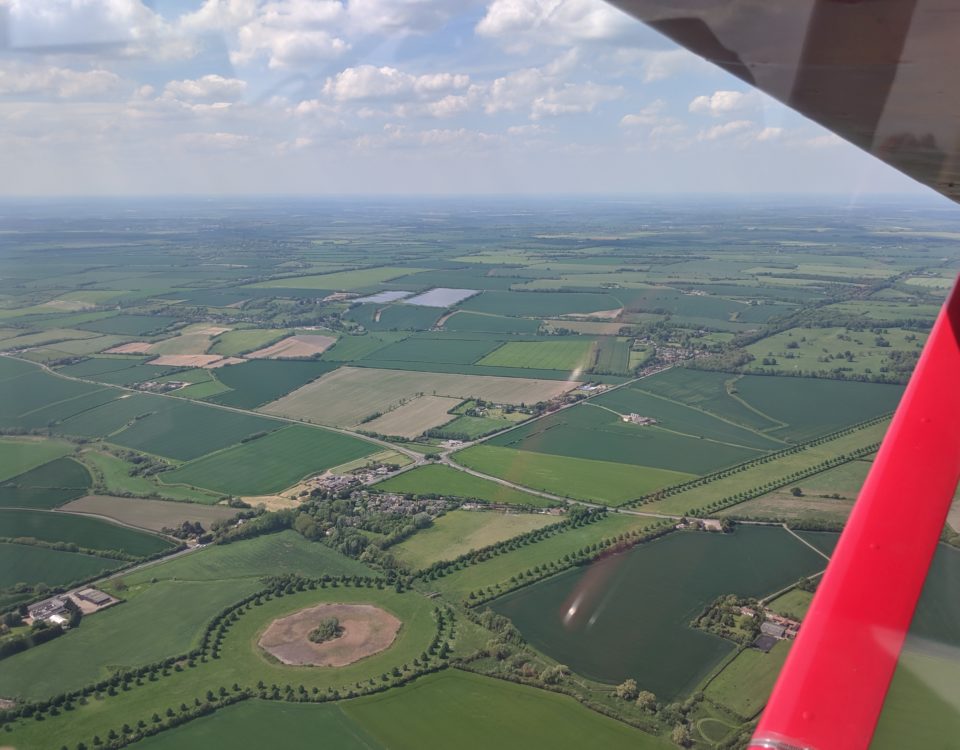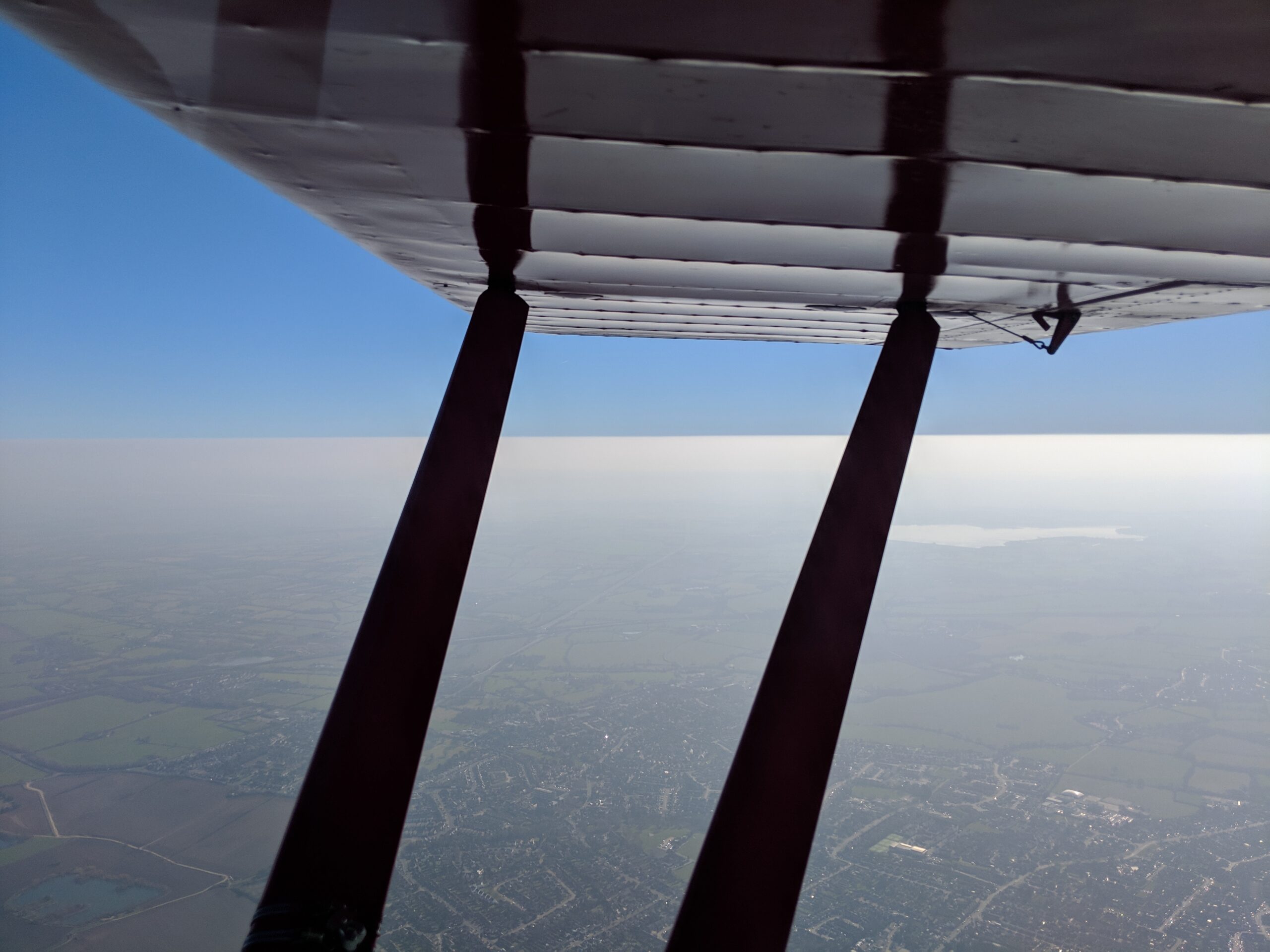
The highs and lows of flying
March 7, 2019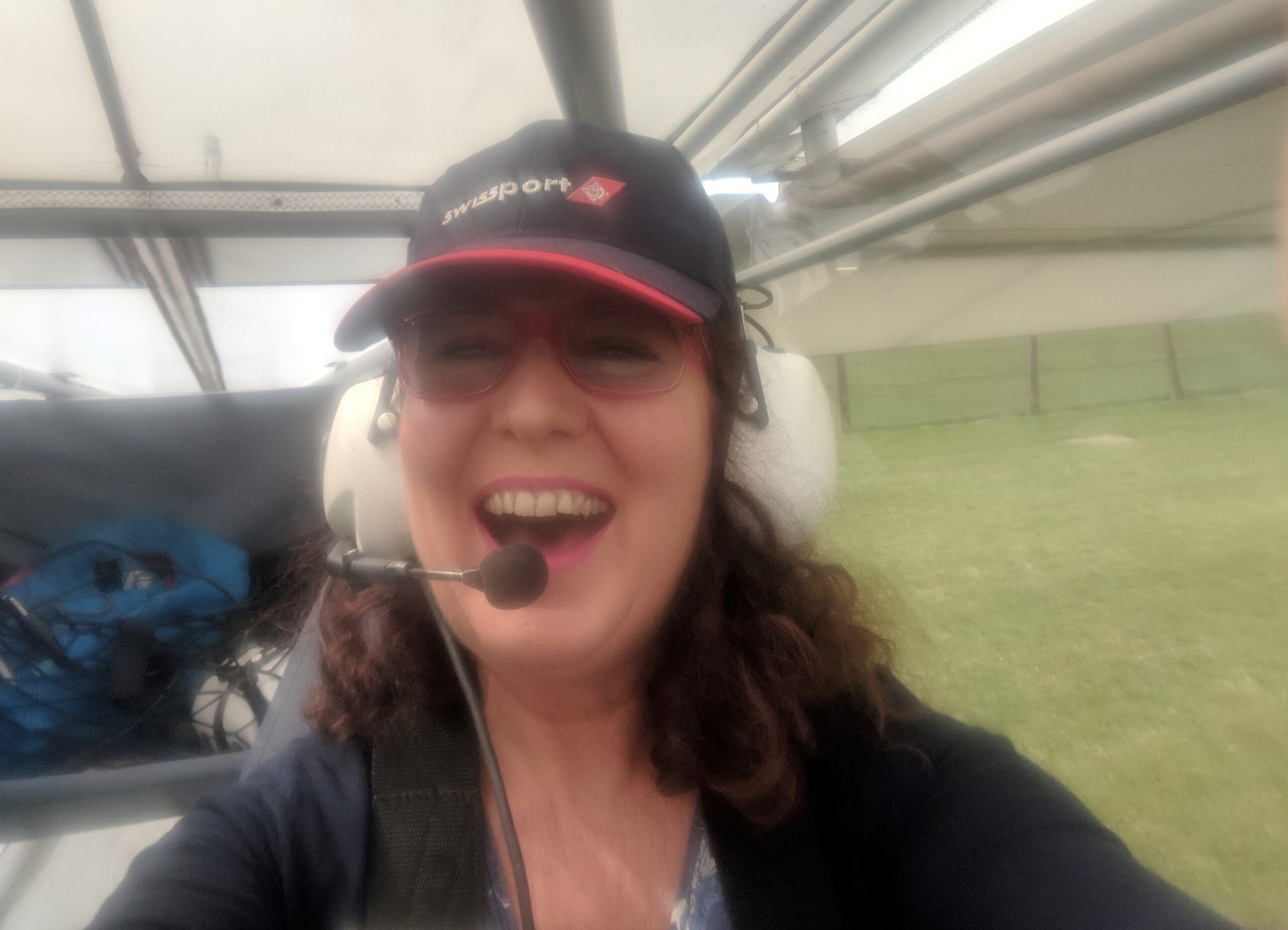
Girl going it alone
May 3, 2019Diving into wind
“You won’t want to fly, so why are you coming over?”, the CFI had asked. “We’ll drink tea and talk about flying,” I quipped back, “standard pilot stuff.” Why was I going if not to fly? Well, it was a glorious sunny day and on the Tafs and Metars, it should have been a good one. But I have learnt that if we’ve had gale warnings, of whatever level, the day before, the air is still turbulent. I would be happy to soak up a bit of sunshine though, I thought.
“Get your aeroplane out,” he barked as I walked in. “I’ve got 45 minutes free.” “Will I like it?” Both windsocks were parallel with the ground. “You will hate every minute of it, but it’s good to fly in conditions like this.” Then he told the surprisingly large assembled group how the wind had picked up the club C42 and dropped it back on the ground, just as he was telling his student about the importance of ground handling.
“Make sure you point it into wind,” he added as I went to open the hangar door. It was the first time I had ever arrived and found the club aeroplane in its hangar, not waiting on the apron. I was a little apprehensive as the huge metal doors swung open.
James helped me get the Skyranger out and swing it round, warming up the engine. We watched as the needles slowly climbed. On the screen, the airspeed flickered up to 20 then 25 knots as the wind gusted around us. “That’s almost enough for it to fly right now,” he commented as the entire frame shuddered. I sat hoping the brake would hold.
The CFI got in. “Flying in this is a piece of cake. No difference. It’s the ground handling that is challenging,” he said. “If you don’t handle it correctly while you are taxiing, the wind can flip you right over. That’s why I came in on 32, rather than 26, so I didn’t have to taxi so far in a crosswind. If winds this strong hit you from the side, they can tip you over, and there is nothing you can do about it.
“You want to have the wind in front or behind you at all times.” He opened the throttle more than I would normally have done, started moving and then swung the aeroplane around so we had the wind from behind now. “Keep the throttle open and the power up, don’t stop now, or the wind will whip us around.” I had already done my checks, so with my heart in my mouth I edged forward. “Don’t stop! What did I say!” as I slowed to take the sharp bend onto the runway. Lucky no one else was flying!
It was the worst take-off I have done in a long time. “Fly! Fly!” he yelled, but I wasn’t sure whether he was saying do or don’t, over the roar of full throttle. We skipped down the runway until I finally lifted off, shaken at being in such extreme conditions. “Why did you do that? We could have wheel-barrowed into the ground? I have seen it happen!”
He was right about being airborne. “Good fun, isn’t it?” he grinned. Er, no, not really. I didn’t dare comment, just pleased I had an instructor at my side. Actually, it really wasn’t that bad and we did a ten minute orbit before heading back to the airfield to try again. My speed kept shooting up and down. “You’ve got to fly your aircraft on a day like today. It’s all about attitude and power. Choose your attitude, and fly. You don’t want to get too fast, or you will stress the aircraft, so keep taking your power down if you need to with all these lifts. This isn’t a flat calm day where you don’t have to concentrate.”
We landed on 32 and then spun around to see if I could do a better take-off. This time I didn’t hop. “You have airspeed almost immediately,” he said. Later, “Did you see how quickly James got off the ground?”
James, who also got to go up, compared notes after our windy experience. He’d been told to rotate quickly but got yelled at for stopping before he turned onto the runway. He was also told it is better to hold the stick neutral than push it the wrong way. The phrase is, Climb into wind, dive away from it. I would in all likelihood be sitting figuring out whether that means I should be holding the stick forwards or backwards, and then get it wrong! The aim is to allow the aileron to tip up or down, and thereby get the wind to actually hold the wing down, rather than meeting it full on and tipping it over. We taxied with the wind behind us and the stick far forward, and I kept wanting to pull it back, as I am used to holding the weight off the nosewheel.
In all, an interesting, even exhilarating, experience. For myself though, I reckon one of London’s great museums is a better option when the wind is blowing a gale.
Note: No animals or aeroplanes were harmed in this experiment. Do not try this at home. And yes, we were within the Skyranger’s limitations of a crosswind landing at all times.
For more about flying in windy conditions, see https://www.aopa.org/training-and-safety/active-pilots/safety-and-technique/windy-flight-operations
Diving into wind
